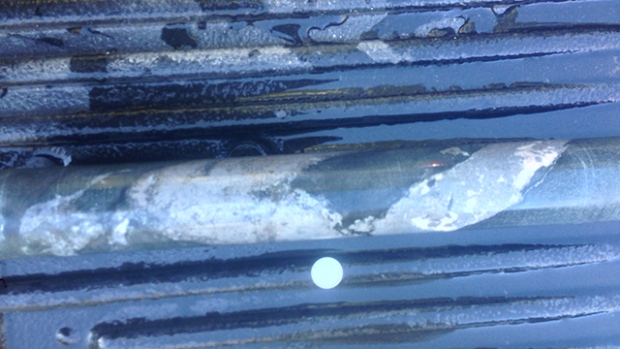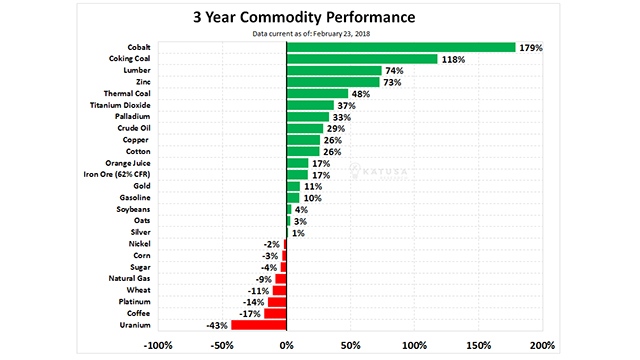
As demand for lithium-ion batteries continues to surge, manufacturers are increasingly looking for stable, conflict-free supplies of their component metals.
The primary sources for cobalt, one of those component metals, are the copper mines of the Democratic Republic of Congo.
Given that country’s war-torn history, and notoriously criminal child labour laws, it’s easy to see why marquee brands like Apple, Dell, Samsung and Tesla would want to look elsewhere for its cobalt supply.
Beyond the corporate social responsibility downsides of sourcing from the DRC are the possibility that new hostilities will create supply disruptions. With almost 100% of world cobalt production tied to copper and nickel production globally, cobalt supply is subject to potential unintended swings in global copper and nickel commodity prices. Finding new sources of cobalt mined as a primary metal, and not a bi-product of mining another metal, is essential.
Furthermore, the increasing use of these energy metals within electric vehicles, smart-grid batteries, cellphones, and lithium-ion batteries absolutely requires stable, reliable supply chains for both cobalt and lithium.
“Most cobalt comes as a by-product of copper or nickel mines. Our cobalt projects are primary cobalt sources in conflict-free areas, and our lithium projects are world-class properties in safe, mining-friendly jurisdictions.”
With the electric vehicle market expected to eventually reach 40% of the overall vehicle market, effectively developing its projects could put LiCo in the proverbial catbird’s seat.
Primary Cobalt in a Safe Jurisdiction
The projects seeing the most work of late are the company’s Teledyne and Glencore Bucke cobalt properties, which are located in and around Cobalt, Ontario.
A 4,000-metre diamond drilling program completed last year on these adjoining properties identified several areas with significant cobalt mineralization.
LiCo has an option to own 100% of Teledyne, subject to a 2% net smelter royalty with Palisade Resources (now renamed “New Found Gold Corp.”).
With this option comes $25 million in inflation-adjusted work and in-place infrastructure, including an adit driven to 500 feet.
Teledyne is directly on-strike with the Aguanico Mine, the Cobalt camp’s most prolific past-producing cobalt mine. Aguanico produced 4.35 million pounds of cobalt and 980,000 ounces of silver in the early 1900s.
Glencore Bucke lies on the west side of Teledyne. LiCo can earn a 100% interest in the property from mining-major Glencore, subject to back-in rights, a production royalty and an off-take agreement.
That deal with Glencore is driving LiCo’s next steps for the property, which include another 10,000-metres of drilling.
Fernback explains, “We’re focusing on Glencore Bucke first because, if we can prove up a $100-million resource, we could entice Glencore to exercise their back-in rights, and get them to consider a joint venture. Our thirteen additional mining claims associated with the Teledyne Property will continue to add value as we strive to calculate a larger and more comprehensive underground resource in the area.”
Access to the World’s Most Prolific Lithium Brine
On the lithium side of the equation, LiCo has secured an enviable position in Chile’s Atacama Desert.
The Salar de Atacama is a 3,000-square-kilometre salt flat in the eponymously named desert. It has high lithium and potassium content and extremely low rainfall. Those characteristics make the area the world’s lithium mecca.
“The Atacama Desert is home to the lowest cost, highest productivity lithium brine in the world,” says Fernback. “Fully 37% of the world’s lithium is produced there. And if you expand your radius out to the sections of Bolivia and Argentina that, along with Chile, form the Lithium Triangle, you have close to 70% of the world’s lithium production.”
Thanks to its option to earn an initial 50% interest in the Purickuta project, LiCo is one of only four companies operating in the Salar de Atacama.
Purickuta is located 22 kilometres from SQM and Albemarle’s large-scale production facilities. The project also lies close to other needed infrastructure, including power, labour, communications, and transportation. Chile is a highly sought after mining jurisdiction and has been recognized by publications like the Mining Journal as being one of the best places in the world to operate.
Potential Lithium Supplies for Tesla’s Gigafactory
LiCo’s quest to amass high-potential projects in safe jurisdictions naturally led it to Nevada.
Not only is the state mining-friendly, but it is also prospective for lithium brine deposits.
And the capper?
Telsa is building its gigafactory near Sparks, Nevada with the goal of producing 35 gigawatt-hours (“GWh”) of battery production per year.
The presence of the gigafactory definitely enhances the value of LiCo’s two projects in the state: Black Rock Desert and Dixie Valley.
The company has a 70% earn-in option in Black Rock Desert from Nevada Energy Metals, subject to a 3% net smelter royalty. This geothermal resource area is known to generate fluids that contain anomalous lithium values.
Dixie Valley is another large geothermal system that is still active. LiCo has an option to acquire 100% of the property from Nevada Energy Metals. That deal is also subject to a 3% NSR.
Dixie Valley possesses the key attributes of a lithium brine deposit, and the company’s management team is excited about the prospect of exploring it further.
Plenty of News in 2018
Looking ahead, the expanded drill program on Glencore Bucke and Teledyne cobalt properties will drive the LiCo Energy Metals (TSXV: LIC) story in 2018, and the company remains in good position to capitalize on the bull market for cobalt.
Fernback noted, “Cobalt has been the best preforming commodity for the past three years showing over 179% growth in this period. The demand is continuing to grow, and supply cannot keep pace. It is a great place to be for LiCo. The exploration program on Glencore Bucke will be a good catalyst for growth — especially if we can get an underground resource defined and attract a JV partner like Glencore. Furthermore, we also very actively looking for new cobalt acquisitions in safe mining jurisdictions like Canada and Chile.”

